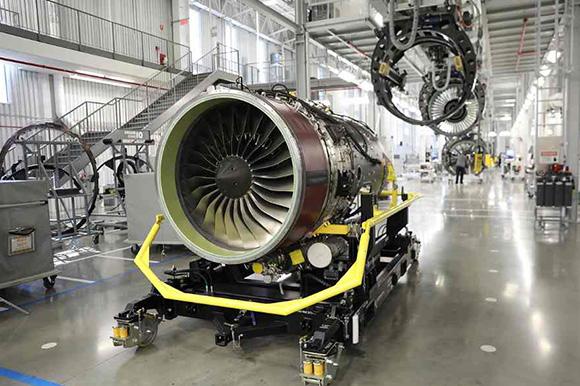
LAS VEGAS—Building on its early success with wins at Dassault and Gulfstream, and with its fourth large-cabin application in flight test, Pratt & Whitney Canada (P&WC) hopes to continue its penetration of the high-end business jet market with more derivatives of the PW800 turbofan.
“We have a little over 470 engines flying to over 235 aircraft, and have already accumulated around 300,000 flight hours,” says Anthony Rossi, vice president for global sales and marketing at P&WC. Based on the same core used in parent company Pratt & Whitney’s PW1000G geared turbofan, the PW814GA and PW815GA versions power Gulfstream’s G500 and G600 respectively, while the PW812D has been developed for the soon-to-debut Dassault 6X.
Full-scale development of the first PW812 followed the September 2018 service debut of the larger PW814GA, the first of a family of P&WC engines derived from the core of the midsize PW1500G Airbus A220 powerplant, on the G500. The second engine, the PW815GA, entered service in 2019 on the longer-range G600. All the versions of the PW800 share identical cores with their air transport derivatives, but do not feature the fan drive gear system.
“When we designed the engine and went into this long-range, large corporate jet market the goal was to leverage our core for more than one application and obviously we've started on our fourth application now,” says Rossi, referring to the development of the PW812GA version for the upcoming G400. “Five is better than four and six is better than five, so that’s ultimately our goal.”
Although there are currently no known new large-cabin projects underway, Rossi says other opportunities are out there. “We need a willing original equipment maker (OEM) and there are some aircraft that I think are due for refreshes. We're available to any OEM looking for an engine in this 12,000-16,000 lb.-thrust class. It is a marquee part of our portfolio, and we are continuing to invest in it.”
P&WC meanwhile marked another milestone in its strategic plan to clear its engine fleet for operation with sustainable aviation fuel (SAF) with the successful flight of a PW535E1-powered Embraer Phenom 300 on 100% SAF. "We have long placed a priority on the use of SAF in our engines, all of which have been certified at 50% SAF compatibility for more than a decade,” says Rossi. The Embraer flight test marks an “important building block” in those efforts, he adds.





